★★★½
“A semi-random grab-bag of bits and pieces. Coherent – no. Amusing – most definitely.”
 This compilation puts together four episodes – three from the first season, plus another at the time exclusive to the DVD. It’s hard to see who this is aimed at: if you’ve not seen the series, novices may find elements, such as Ron’s naked mole rat, kinda bizarre (trivia note: the rat’s squeaks are by Nancy Cartwright, who also does some loser called Bart Simpson). On the other hand, fans will have seen almost all the material, and would likely far rather have seen a complete Box Set rather than semi-random episodes. They’re not even particularly highly-regarded ones: the TVTome viewers’ poll ranks only one in the Top 20. However, it’s still the smartest thing on the Disney Channel, and easily kept the GWG viewing panel (ages from 19 to forty-coughhackwheeze) entertained.
This compilation puts together four episodes – three from the first season, plus another at the time exclusive to the DVD. It’s hard to see who this is aimed at: if you’ve not seen the series, novices may find elements, such as Ron’s naked mole rat, kinda bizarre (trivia note: the rat’s squeaks are by Nancy Cartwright, who also does some loser called Bart Simpson). On the other hand, fans will have seen almost all the material, and would likely far rather have seen a complete Box Set rather than semi-random episodes. They’re not even particularly highly-regarded ones: the TVTome viewers’ poll ranks only one in the Top 20. However, it’s still the smartest thing on the Disney Channel, and easily kept the GWG viewing panel (ages from 19 to forty-coughhackwheeze) entertained.
The first episode, Attack of the Killer Bebes, is the best, I’d say. Ron wants to be a cheerleader, while Kim’s dad is kidnapped by the evil Dr. Drakken, who has built three fem-bots in order to…er, do something. It illustrates the central idea of KP – Kim’s Sisyphean struggle to balance home, school and fighting evil – with beautifully surreal moments, such as Drakken’s quest for a phone-book to prove that Possible is a common surname. Downhill, the second ep, works less well; it’s too group-huggy, teetering on the edge of sickly. But the concept of D.N.Amy, a toy collector and crazed bio-geneticist intent in making live version of her plush pals, is enough to keep things interesting.
Third is Partners, where Kim is paired with the class genius for a science project, while Drakken and D.N. Amy team up, with the following immortal exchange:
D.N.Amy: ”But I’m all about cute and cuddly!”
Dr. D: “Have you ever tried vicious and bloodthirsty?”
D.N.Amy: “Do you think I’d like it?”
Finally, tucked away in the special features, there’s Crush: how it all began, though with surprisingly little insight into Kim’s origins as a superheroic teenager. She springs, fully formed, taking on Drakken’s giant robot and asking her crush, voiced by Breckin Meyer, to the dance. Overall, it’s a cute package, but you’d probably be better off starting with A Sitch in Time, and waiting (hopefully…) for that Season One box set.
Star: Christy Carlson Romano, Will Friedle, John DiMaggio, Melissa McCarthy





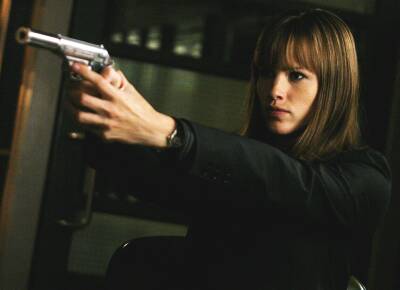 Where is Sydney, and what have you done with her? We might have been forgiven for uttering this cry at the end of season three, which exited not with a bang, but a whimper. “We need to talk.” That’s pretty much what Jack said to Sydney after she discovered, apparently, that her entire life had been a CIA operation. This was hardly a surprise, if you remembered Project Christmas from earlier on, Jack’s plan which tested first-graders – including his own daughter – for spyworthy attributes. The news that the show wouldn’t restart until January 2005 thus provoked little more than mild disappointment.
Where is Sydney, and what have you done with her? We might have been forgiven for uttering this cry at the end of season three, which exited not with a bang, but a whimper. “We need to talk.” That’s pretty much what Jack said to Sydney after she discovered, apparently, that her entire life had been a CIA operation. This was hardly a surprise, if you remembered Project Christmas from earlier on, Jack’s plan which tested first-graders – including his own daughter – for spyworthy attributes. The news that the show wouldn’t restart until January 2005 thus provoked little more than mild disappointment.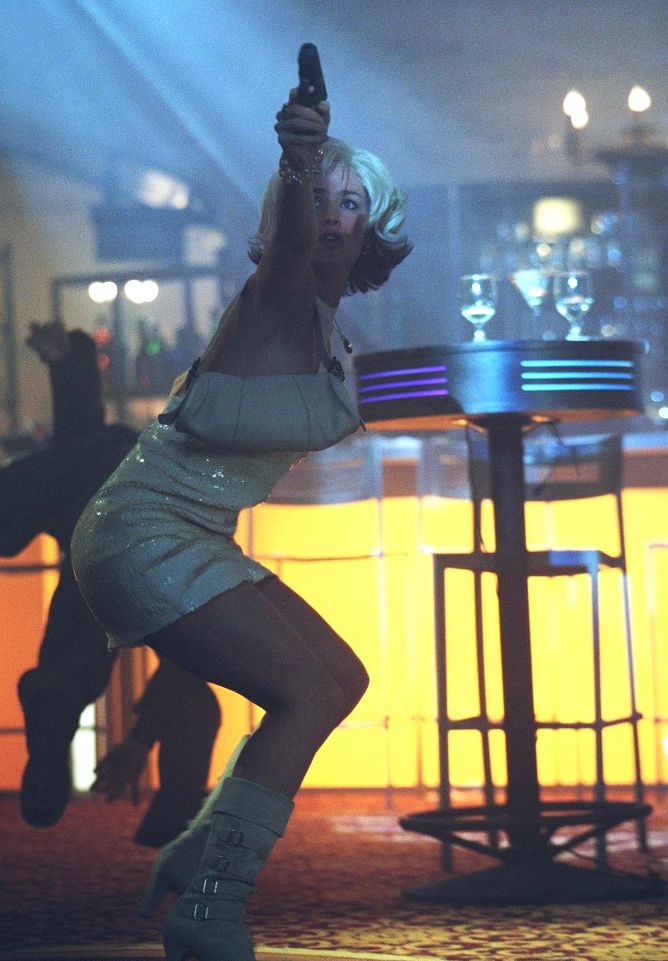
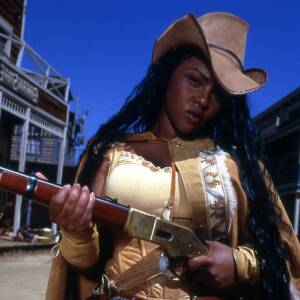 This comes across less like a Western, more like a feature-length rap promo – with every bit as much emotional depth or historical accuracy. The idea that a gang of ethnic gun-toting women could ever ride into town at the turn of the century, and get served at the local saloon with little problem stretches credulity to near-breaking. It then snaps entirely when faced with their always-immaculate clothes and hair, even as the ladies sleep rough. The group of former bank-robbers return to the fray after the sister of one is killed by outlaws, under the control of the one-eyed Bobby Brown. Insert Whitney Houston joke here. He and his gang have taken control of a town, from a sheriff with a startlingly Australian accent, as part of their search for treasure supposedly buried locally.
This comes across less like a Western, more like a feature-length rap promo – with every bit as much emotional depth or historical accuracy. The idea that a gang of ethnic gun-toting women could ever ride into town at the turn of the century, and get served at the local saloon with little problem stretches credulity to near-breaking. It then snaps entirely when faced with their always-immaculate clothes and hair, even as the ladies sleep rough. The group of former bank-robbers return to the fray after the sister of one is killed by outlaws, under the control of the one-eyed Bobby Brown. Insert Whitney Houston joke here. He and his gang have taken control of a town, from a sheriff with a startlingly Australian accent, as part of their search for treasure supposedly buried locally.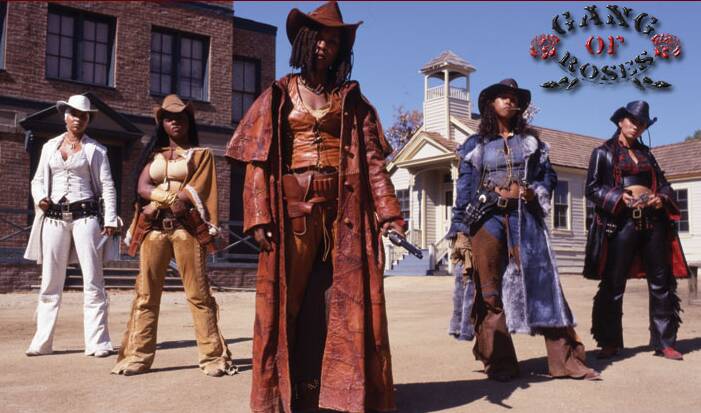
 If I ever become an assassin, I will never utter the words “last” and “job” to anyone – it’s just
If I ever become an assassin, I will never utter the words “last” and “job” to anyone – it’s just  Everyone’s favourite scissor-wielding mobsteress Cha Eun Jin (Shin) is back, in a follow up to one of the biggest hits in recent Korean cinema. Starting with a rooftop brawl set to White Christmas, there’s no hanging around here: Eun Jin falls from the roof, loses her memory, and we leap forward two years. She is now living with a restaurant owner (Park), and regularly resorts to desperate measures, usually involving electricity, to remember who she is. However, as her foes first time round have plans to build a mall in the area, and her step-daughter is getting bullied at school, no prizes for guessing that memory’s gonna be jogged, sooner or later…
Everyone’s favourite scissor-wielding mobsteress Cha Eun Jin (Shin) is back, in a follow up to one of the biggest hits in recent Korean cinema. Starting with a rooftop brawl set to White Christmas, there’s no hanging around here: Eun Jin falls from the roof, loses her memory, and we leap forward two years. She is now living with a restaurant owner (Park), and regularly resorts to desperate measures, usually involving electricity, to remember who she is. However, as her foes first time round have plans to build a mall in the area, and her step-daughter is getting bullied at school, no prizes for guessing that memory’s gonna be jogged, sooner or later… I’m still trying to work out what the title actually means; it certainly bears no relevance to the film. More generaly, the biggest point of interest is its similarity to Blade 2, which took the basic concept (hunt for the carrier of a virus that turns its victim into bald, psychotic bloodsuckers) and did a lot more with its Eastern European setting. Henstridge is Delon, a policewoman who has her partner dismembered while they search a house, and Lambert leads the backup team – they follow their target into some vents which connect to an old prison, and where they rapidly become the prey. All this is set just outside a post-apocalyptic (plague, specifically) Boston – though the cop cars have ‘POLICIA’ on them. There’s also a subplot about Delon’s son, and a black-market passport she bought for him, which is of no significance whatsoever, and is probably there only to get the running time up to feature length (and at 76 minutes, only barely!).
I’m still trying to work out what the title actually means; it certainly bears no relevance to the film. More generaly, the biggest point of interest is its similarity to Blade 2, which took the basic concept (hunt for the carrier of a virus that turns its victim into bald, psychotic bloodsuckers) and did a lot more with its Eastern European setting. Henstridge is Delon, a policewoman who has her partner dismembered while they search a house, and Lambert leads the backup team – they follow their target into some vents which connect to an old prison, and where they rapidly become the prey. All this is set just outside a post-apocalyptic (plague, specifically) Boston – though the cop cars have ‘POLICIA’ on them. There’s also a subplot about Delon’s son, and a black-market passport she bought for him, which is of no significance whatsoever, and is probably there only to get the running time up to feature length (and at 76 minutes, only barely!). Shot in what looks like four rooms, it’s up to director Pyun to make the most of a higher-profile cast than he usually manages – unfortunately, he fails, though I liked the snap-zoom technique applied to bullet hits. This is straightforward ‘spam in a tunnel’ cinema, with little tension, character, or anything else that might elevate this above the mundane. Henstridge, bless her, does what she can, and comes over like a grubby version of Lara Croft; her undeniable action heroine potential has so far been wasted in stuff like this or the lame She Spies. Partly shot in the capital of Herzegovina, Mostar, the “just-bombed” look is likely genuine, from a conflict that only ended the previous year; it may be exploitative, but at least Pyun brought employment to the locals. I imagine he’s now scouting locations in Kabul and Baghdad.
Shot in what looks like four rooms, it’s up to director Pyun to make the most of a higher-profile cast than he usually manages – unfortunately, he fails, though I liked the snap-zoom technique applied to bullet hits. This is straightforward ‘spam in a tunnel’ cinema, with little tension, character, or anything else that might elevate this above the mundane. Henstridge, bless her, does what she can, and comes over like a grubby version of Lara Croft; her undeniable action heroine potential has so far been wasted in stuff like this or the lame She Spies. Partly shot in the capital of Herzegovina, Mostar, the “just-bombed” look is likely genuine, from a conflict that only ended the previous year; it may be exploitative, but at least Pyun brought employment to the locals. I imagine he’s now scouting locations in Kabul and Baghdad. Polo plays Quick, an assassin whose job is to take out mob accountant Brewer (Donovan) after he turns stoolpigeon. When her employer tries to double-cross her, she goes on the run with her target, who has hidden $3m in ill-gotten gains. Her corrupt cop boyfriend (Fahey) also has designs on the money, raising the suspicions of his partner (Carrere, an effective but wasted performance).
Polo plays Quick, an assassin whose job is to take out mob accountant Brewer (Donovan) after he turns stoolpigeon. When her employer tries to double-cross her, she goes on the run with her target, who has hidden $3m in ill-gotten gains. Her corrupt cop boyfriend (Fahey) also has designs on the money, raising the suspicions of his partner (Carrere, an effective but wasted performance).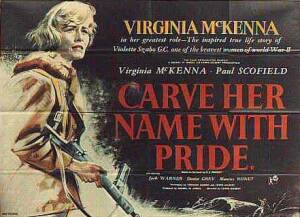 This is based on a true story, so we know from the start this is going to end in front of a firing-squad – at least until the Hollywood remake, with a happy ending. Given this, the film still tries to crank up the tension, but as written, Violette Szabo comes off as beyond saintly, without flaws or imperfections. Almost as irritating, she is shown as being mostly inspired by the death of her husband, rather than any innate patriotism (Charlotte Gray similarly portrayed a female SOE agent as passive-reactive). Having said that, the movie generally stays true to the facts, though the poem supposedly written by her husband was actually, in far less romantic reality, by her SOE codemaster – interestingly, the SOE’s name is not mentioned at all. Much of the end is fictionalised; details of her interrogation, for example, are obviously unavailable.
This is based on a true story, so we know from the start this is going to end in front of a firing-squad – at least until the Hollywood remake, with a happy ending. Given this, the film still tries to crank up the tension, but as written, Violette Szabo comes off as beyond saintly, without flaws or imperfections. Almost as irritating, she is shown as being mostly inspired by the death of her husband, rather than any innate patriotism (Charlotte Gray similarly portrayed a female SOE agent as passive-reactive). Having said that, the movie generally stays true to the facts, though the poem supposedly written by her husband was actually, in far less romantic reality, by her SOE codemaster – interestingly, the SOE’s name is not mentioned at all. Much of the end is fictionalised; details of her interrogation, for example, are obviously unavailable.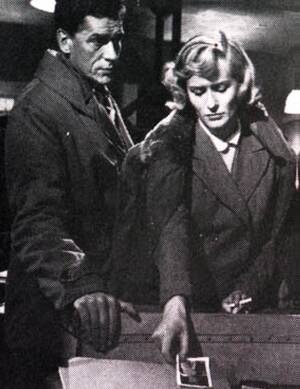 The film does take
The film does take 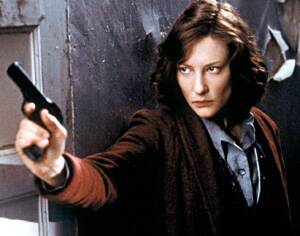 Love story or wartime thriller? The script here tries to have it both ways, and as a result of this uncertainty, the undeniable potential in the idea is unfulfilled. Gray (Blanchett) is dropped into Vichy France during World War II as an agent, but her bosses don’t realise she is more interested in finding her pilot lover (Penry-Jones), who’s been shot down nearby. While conflict between love, and love of country, would have been interesting, the former is almost ignored, then disposed of in a thoroughly unconvincing manner. Not that this diversion is uninteresting; you get a real sense of the terrors of war, with people being “vanished” in seconds, and the tension of living your life on a knife-edge behind enemy lines.
Love story or wartime thriller? The script here tries to have it both ways, and as a result of this uncertainty, the undeniable potential in the idea is unfulfilled. Gray (Blanchett) is dropped into Vichy France during World War II as an agent, but her bosses don’t realise she is more interested in finding her pilot lover (Penry-Jones), who’s been shot down nearby. While conflict between love, and love of country, would have been interesting, the former is almost ignored, then disposed of in a thoroughly unconvincing manner. Not that this diversion is uninteresting; you get a real sense of the terrors of war, with people being “vanished” in seconds, and the tension of living your life on a knife-edge behind enemy lines.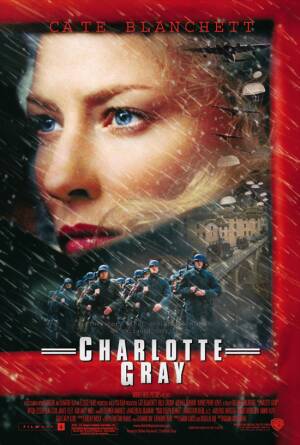 Mostly, the film is concerned with Charlotte’s protection of two Jewish children, and involvement in a resistance cell led by Julien (Crudup). They’re communists, so the British don’t really like them, but they’re convenient – and can be abandoned when necessary, the revelation of which provides the film with its most chilling moment. Blanchett has the right steely resolve for the role, and the cast is generally excellent; particular credit to Gambon (magnificently surly as Julien’s father), Ron Cook as Gray’s contact, and Anton Lesser, an oily collaborator who had us screaming “Die! Die!” at the TV set.
Mostly, the film is concerned with Charlotte’s protection of two Jewish children, and involvement in a resistance cell led by Julien (Crudup). They’re communists, so the British don’t really like them, but they’re convenient – and can be abandoned when necessary, the revelation of which provides the film with its most chilling moment. Blanchett has the right steely resolve for the role, and the cast is generally excellent; particular credit to Gambon (magnificently surly as Julien’s father), Ron Cook as Gray’s contact, and Anton Lesser, an oily collaborator who had us screaming “Die! Die!” at the TV set.
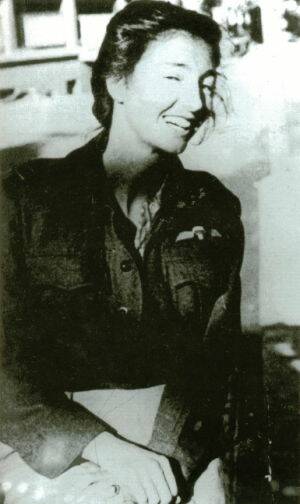 In World War II, the British SOE (Special Operations Executive) recruited and trained a number of women agents for insertion into occupied territory. There, they risked torture and execution, while carrying out missions of intelligence-gathering, subversion and sabotage. The exploits of some have received the recognition they deserve (such as Violette Szabo, who received both Britain’s George Cross and the French Croix de Guerre), but most seem to have slid through the cracks of time – Binney’s book is a solid and commendable effort to save at least a few from historical oblivion.
In World War II, the British SOE (Special Operations Executive) recruited and trained a number of women agents for insertion into occupied territory. There, they risked torture and execution, while carrying out missions of intelligence-gathering, subversion and sabotage. The exploits of some have received the recognition they deserve (such as Violette Szabo, who received both Britain’s George Cross and the French Croix de Guerre), but most seem to have slid through the cracks of time – Binney’s book is a solid and commendable effort to save at least a few from historical oblivion.